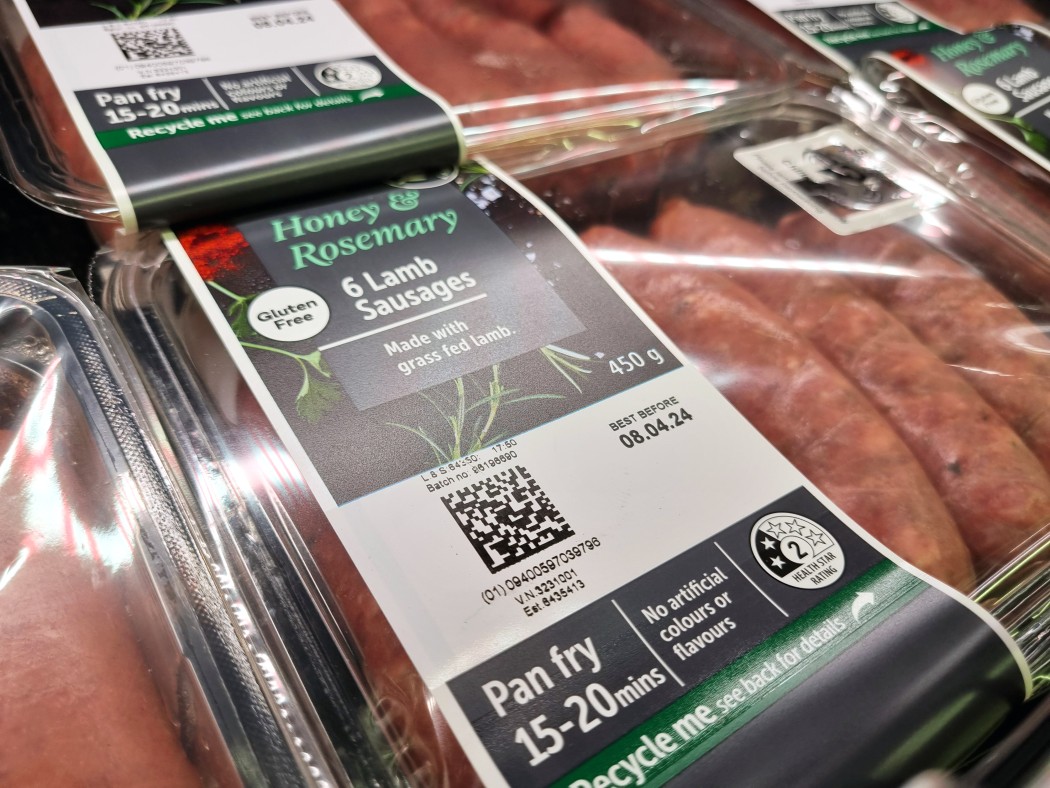How Woolworths New Zealand is improving freshness and reducing food waste with GS1 2D barcodes
Managing a short shelf-life fresh foods business is a challenging endeavour. With a little help from GS1, Woolworths New Zealand has changed the operational management of such delicate foods. Food waste is a real issue - in New Zealand an estimated $3.2 billion every year is lost between the farm and consumption (New Zealand Food Waste Survey, 2023).
If you’ve been perusing the meat aisles at a North Island Countdown or Woolworths store, you may have noticed a small, but significant change in combating food waste nationally – GS1 2D barcodes on Woolworths’ meat products. Woolworths New Zealand is among the first in New Zealand to adopt 2D barcodes.
The new addition looks a bit like a QR code. However, Woolworths have deployed the DataMatrix version of GS1’s 2D barcodes. These have the ability to encode much more product information than a traditional linear (or 1D) barcode. Information such as batch/lot number, best-before date, use-by date, weight and even web links to further information about the product can all be carried by a 2D barcode. Working with integrated meat supplier Hilton Foods, Woolworths NZ has rolled out 2D barcodes on all fresh meat products under the Woolworths brand in their North Island stores. It is a significant step in its plan to implement 2D barcodes across their fresh product range.
Since the 2D implementation, Woolworths say there have been gains in a number of key areas, most notably:
Improving freshness
Capturing the best-before date instantly via a quick, simple scan has enabled improvements with in-store shelf-life management through better ordering and better stock rotation. This means stores can offer customers fresher products with more days left before it should be consumed.
Waste reduction
GS1 2D barcodes offer huge benefits for waste reduction. Systems now recognise ‘artificial’ stimulants of demand such as markdowns to clear aging stock, enabling repeated overordering to be minimised. Even traditional product markdown processes - which were manual - have been revolutionised meaning if a product is nearing expiry it can be easily identified, and pricing for the product can be automatically generated based on time parameters. The ability to discount food so easily has increased the sell-through of products and reduced overall food waste across the meat department.
Stronger food safety interventions
With the best-before date now encoded in each barcode, Woolworths can now automatically block the sale of expired items at the point of sale in-store. In the unlikely case of expired meat reaching the store checkout, the checkout operator will notice an alert at the point-of-sale preventing the sale to the consumer. This further strengthens existing food safety processes and consumer safeguards.
With these benefits being realised, Woolworths is looking to roll out 2D barcodes across the rest of the fresh product range.
Woolworths approached GS1 NZ to provide barcode verification support for their rollout of GS1 2D barcoding. “It’s great to see one of New Zealand’s largest retailers adopting GS1 2D barcodes. There are enormous benefits to 2D barcode implementation and Woolworths is really getting a head-start with this next generation of barcodes,” says Dr Peter Stevens, CEO of GS1 New Zealand.
While the transition to all retailers being able to scan GS1 2D barcodes is set for 2027, there’s a lot that retailers and suppliers can be doing to get ready for the transition. “We’ve seen some great examples of retailers across the world using GS1 2D barcodes to reduce food waste and, through embedded weblinks, stimulate consumer engagement,” says Dr Stevens “The need to reduce global waste is one factor in reducing global emissions and has significant cost benefits for retailers.”
For more information on GS1 2D barcodes and their use, talk to GS1’s engagement team.

